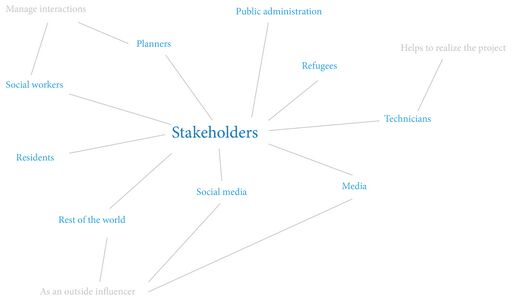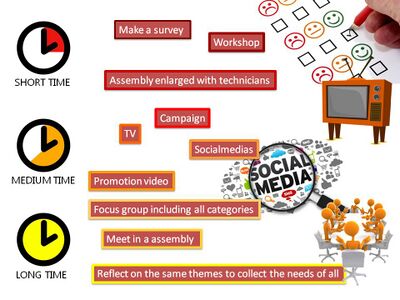LED 2016 Group A Democratic Change Process
Montebello asylum shelter
| Place name | Montebello | |
| Location | Oslo | |
| Country | Norway | |
| Author(s) | Pirjetta Fagerli | |

| ||
Rationale: Why have you chosen this case for the landscape and democracy seminar?
I have chosen this case because of the relevant problem that touches most of Europe today. Asylum centers are everywhere and placing them is a tough job because of the resistance from some of the people who already live in that area. This is an interesting case because the citizen resistance was especially strong in Montebello, Oslo. This is a good example of a case where the residents were very engaged in the situation and used their right to speak up. The situation was also a frustrating one because the citizens felt that they were not informed enough of the plans and the planners felt that the citizens were being difficult and not understanding enough. This is also interesting because Montebello is situated in one of the statistically wealthier areas in Oslo. I am writing in the past tense because the plans were cancelled.
Representation of your observations
- you are basically free to use one or a mix of different presentation techniques
- possibilities are: analytical drawings, graphical representations, collages, video clips, comic/graphic novel, written essay/visual essay
- please add any visual material to the gallery, videos can be placed below, you may add text as you like
Reflection
What are the major challenges for changing the situation?
Hypothetically if one could change the situation, there would be some challenges. One challenge is that it is very hard to change peoples prejudice. It is hard to assure to someone that this is safe when they have already decided otherwise. The fear of the unknown is a hard nut to crack. Another challenge was lack of proper communication from both sides. There was much debate without openness to hear what the other side is saying. There were many unanswered questions and many unheard answers. Some of the meetings with the residents were not well planned and the atmosphere was hostile.
What could be a starting point for democractically-based change?
What you should do first is to basically establish friendship and trust. Between the locals, refugees and the planners. You can do this just by being there and being available. People are naturally attracted to this kind of behavior and get interested in things or people that they see on a daily basis. This is a psychological fact. A good starting point would be to include the residents from the beginning. There was a lot of insecurity about the scale of the project so the planners could have been more clear about those aspects. Well prepared information meetings with sturdy facts and studies could have helped to change some minds. There is also some positive aspects to this kind of change and one could have highlighted these positive aspects. Maybe there could have been some meetings between the residents and some asylum seekers in order to dilute any prejudice. One could have presented more from asylum seekers perspective so that the residents could relate slightly more to this serious journey that they have to go through.
Power Map
Create a visual representation of the stakeholder groups that are involved in your case. Try to cover the following aspects in your representation: Power (high, medium, low) / Support (positive, neutral, negative)/ Influence (high or low)/ Need (strong, medium, weak)+ also map the relationships between the stakeholder/power groups
- Power Map
Change Process
Look at the various methods and tools available and think how they can be applied creatively. Think about the needs of different stakeholder groups - you may need a methodical mix to address them all. Illustrate graphically how these methods/tools might be applied in a short, medium and long-term perspective.
- Change Process
Concluding reflections
- Reflect on your case and your change model. Potentials? Limitations?
- Which practices or practitioners have framed your work, including a brief narrative of the potential gaps you have filled in our knowledge as designers and planners of participation.(approx. 150 words)
References
- "UDI vraker planene om asylmottak på Montebello", Osloby Nyheter, CHRISTIAN SØRGJERD, ANDREAS BAKKE FOSS, PUBLISERT: 23.FEB. 2016 22:02
- "Vil bosette 1000 asylsøkere midt mellom villaene på Montebello", Osloby Nyheter, OLAV EGGESVIK, PUBLISERT: 01.DES. 2015 18:12
- Brennpunkt: Ikke i mitt nabolag, NRK, 2016




